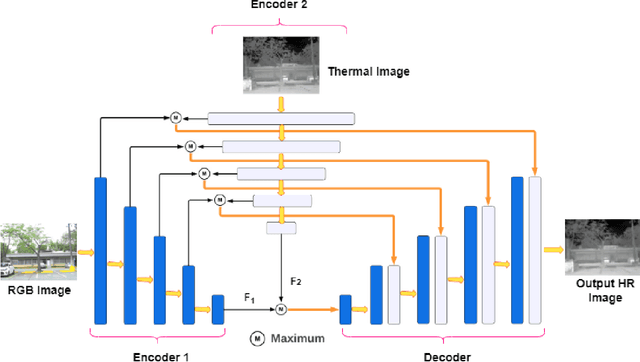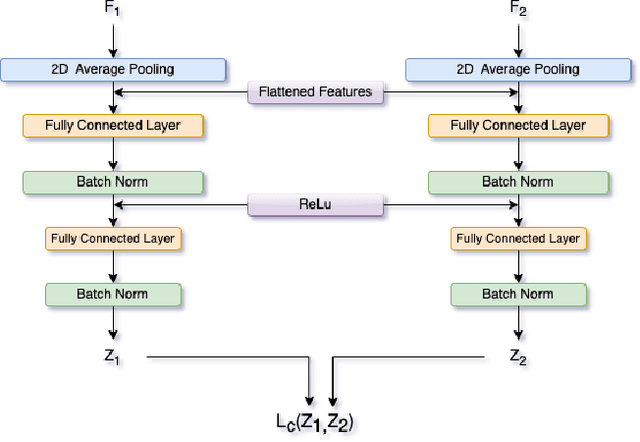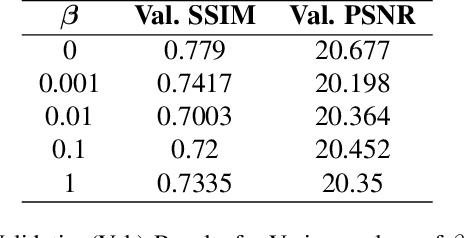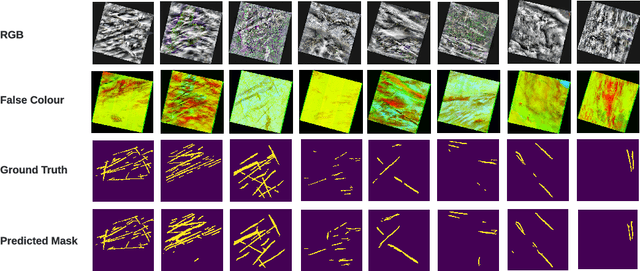Aditya Kasliwal
HipyrNet: Hypernet-Guided Feature Pyramid network for mixed-exposure correction
Jan 09, 2025



Abstract:Recent advancements in image translation for enhancing mixed-exposure images have demonstrated the transformative potential of deep learning algorithms. However, addressing extreme exposure variations in images remains a significant challenge due to the inherent complexity and contrast inconsistencies across regions. Current methods often struggle to adapt effectively to these variations, resulting in suboptimal performance. In this work, we propose HipyrNet, a novel approach that integrates a HyperNetwork within a Laplacian Pyramid-based framework to tackle the challenges of mixed-exposure image enhancement. The inclusion of a HyperNetwork allows the model to adapt to these exposure variations. HyperNetworks dynamically generates weights for another network, allowing dynamic changes during deployment. In our model, the HyperNetwork employed is used to predict optimal kernels for Feature Pyramid decomposition, which enables a tailored and adaptive decomposition process for each input image. Our enhanced translational network incorporates multiscale decomposition and reconstruction, leveraging dynamic kernel prediction to capture and manipulate features across varying scales. Extensive experiments demonstrate that HipyrNet outperforms existing methods, particularly in scenarios with extreme exposure variations, achieving superior results in both qualitative and quantitative evaluations. Our approach sets a new benchmark for mixed-exposure image enhancement, paving the way for future research in adaptive image translation.
LapGSR: Laplacian Reconstructive Network for Guided Thermal Super-Resolution
Nov 12, 2024



Abstract:In the last few years, the fusion of multi-modal data has been widely studied for various applications such as robotics, gesture recognition, and autonomous navigation. Indeed, high-quality visual sensors are expensive, and consumer-grade sensors produce low-resolution images. Researchers have developed methods to combine RGB color images with non-visual data, such as thermal, to overcome this limitation to improve resolution. Fusing multiple modalities to produce visually appealing, high-resolution images often requires dense models with millions of parameters and a heavy computational load, which is commonly attributed to the intricate architecture of the model. We propose LapGSR, a multimodal, lightweight, generative model incorporating Laplacian image pyramids for guided thermal super-resolution. This approach uses a Laplacian Pyramid on RGB color images to extract vital edge information, which is then used to bypass heavy feature map computation in the higher layers of the model in tandem with a combined pixel and adversarial loss. LapGSR preserves the spatial and structural details of the image while also being efficient and compact. This results in a model with significantly fewer parameters than other SOTA models while demonstrating excellent results on two cross-domain datasets viz. ULB17-VT and VGTSR datasets.
SolarPanel Segmentation :Self-Supervised Learning for Imperfect Datasets
Feb 20, 2024

Abstract:The increasing adoption of solar energy necessitates advanced methodologies for monitoring and maintenance to ensure optimal performance of solar panel installations. A critical component in this context is the accurate segmentation of solar panels from aerial or satellite imagery, which is essential for identifying operational issues and assessing efficiency. This paper addresses the significant challenges in panel segmentation, particularly the scarcity of annotated data and the labour-intensive nature of manual annotation for supervised learning. We explore and apply Self-Supervised Learning (SSL) to solve these challenges. We demonstrate that SSL significantly enhances model generalization under various conditions and reduces dependency on manually annotated data, paving the way for robust and adaptable solar panel segmentation solutions.
ReFuSeg: Regularized Multi-Modal Fusion for Precise Brain Tumour Segmentation
Aug 26, 2023Abstract:Semantic segmentation of brain tumours is a fundamental task in medical image analysis that can help clinicians in diagnosing the patient and tracking the progression of any malignant entities. Accurate segmentation of brain lesions is essential for medical diagnosis and treatment planning. However, failure to acquire specific MRI imaging modalities can prevent applications from operating in critical situations, raising concerns about their reliability and overall trustworthiness. This paper presents a novel multi-modal approach for brain lesion segmentation that leverages information from four distinct imaging modalities while being robust to real-world scenarios of missing modalities, such as T1, T1c, T2, and FLAIR MRI of brains. Our proposed method can help address the challenges posed by artifacts in medical imagery due to data acquisition errors (such as patient motion) or a reconstruction algorithm's inability to represent the anatomy while ensuring a trade-off in accuracy. Our proposed regularization module makes it robust to these scenarios and ensures the reliability of lesion segmentation.
CoReFusion: Contrastive Regularized Fusion for Guided Thermal Super-Resolution
Apr 24, 2023



Abstract:Thermal imaging has numerous advantages over regular visible-range imaging since it performs well in low-light circumstances. Super-Resolution approaches can broaden their usefulness by replicating accurate high-resolution thermal pictures using measurements from low-cost, low-resolution thermal sensors. Because of the spectral range mismatch between the images, Guided Super-Resolution of thermal images utilizing visible range images is difficult. However, In case of failure to capture Visible Range Images can prevent the operations of applications in critical areas. We present a novel data fusion framework and regularization technique for Guided Super Resolution of Thermal images. The proposed architecture is computationally in-expensive and lightweight with the ability to maintain performance despite missing one of the modalities, i.e., high-resolution RGB image or the lower-resolution thermal image, and is designed to be robust in the presence of missing data. The proposed method presents a promising solution to the frequently occurring problem of missing modalities in a real-world scenario. Code is available at https://github.com/Kasliwal17/CoReFusion .
Performance evaluation of deep segmentation models on Landsat-8 imagery
Nov 30, 2022

Abstract:Contrails, short for condensation trails, are line-shaped ice clouds produced by aircraft engine exhaust when they fly through cold and humid air. They generate a greenhouse effect by absorbing or directing back to Earth approximately 33% of emitted outgoing longwave radiation. They account for over half of the climate change resulting from aviation activities. Avoiding contrails and adjusting flight routes could be an inexpensive and effective way to reduce their impact. An accurate, automated, and reliable detection algorithm is required to develop and evaluate contrail avoidance strategies. Advancement in contrail detection has been severely limited due to several factors, primarily due to a lack of quality-labeled data. Recently, proposed a large human-labeled Landsat-8 contrails dataset. Each contrail is carefully labeled with various inputs in various scenes of Landsat-8 satellite imagery. In this work, we benchmark several popular segmentation models with combinations of different loss functions and encoder backbones. This work is the first to apply state-of-the-art segmentation techniques to detect contrails in low-orbit satellite imagery. Our work can also be used as an open benchmark for contrail segmentation and is publicly available.
 Add to Chrome
Add to Chrome Add to Firefox
Add to Firefox Add to Edge
Add to Edge